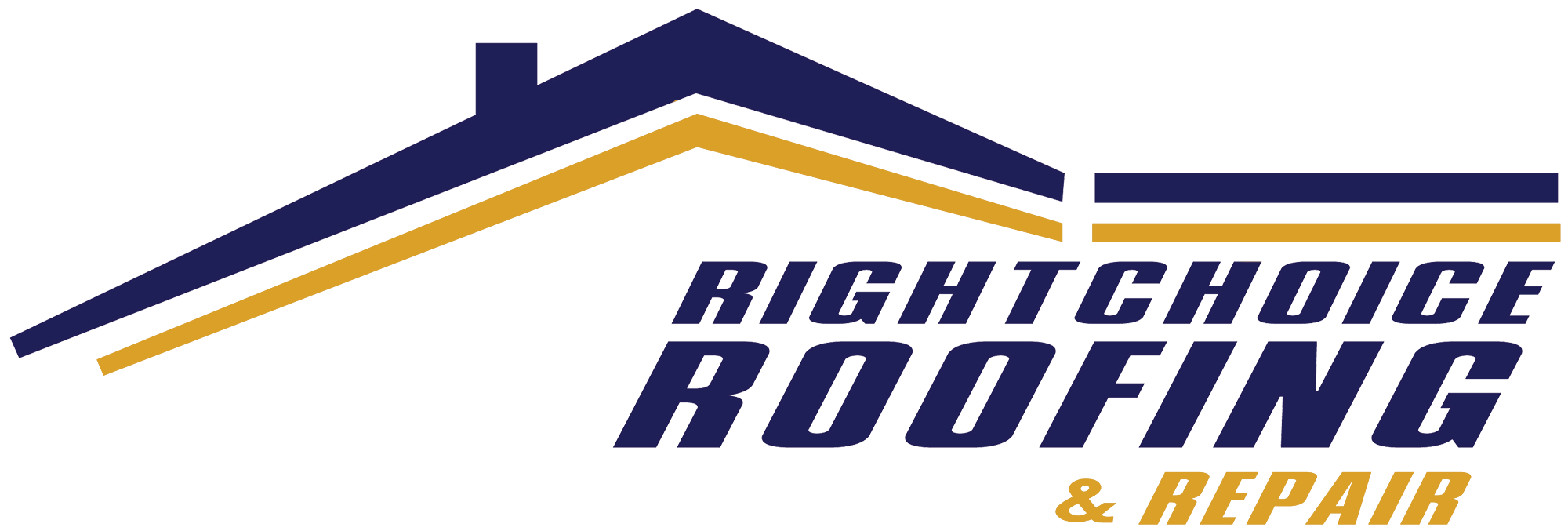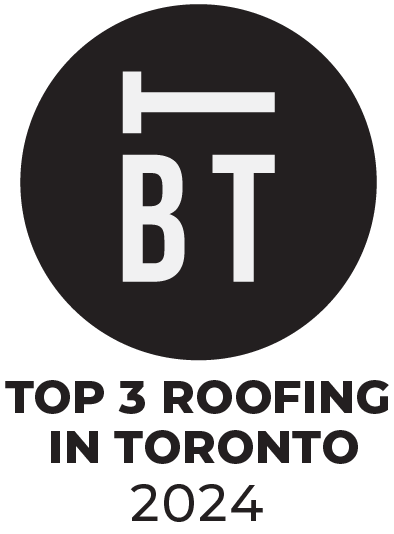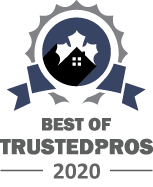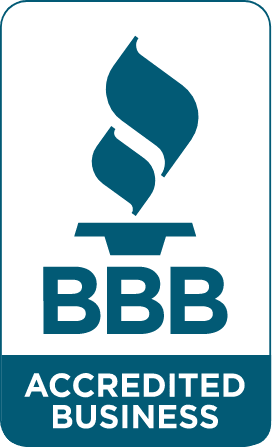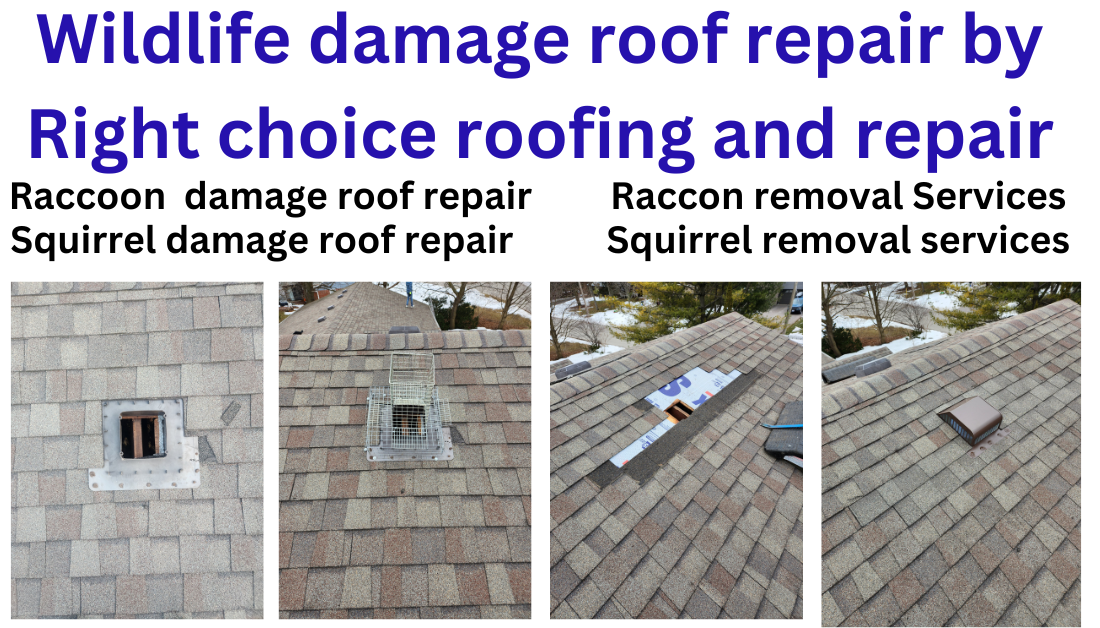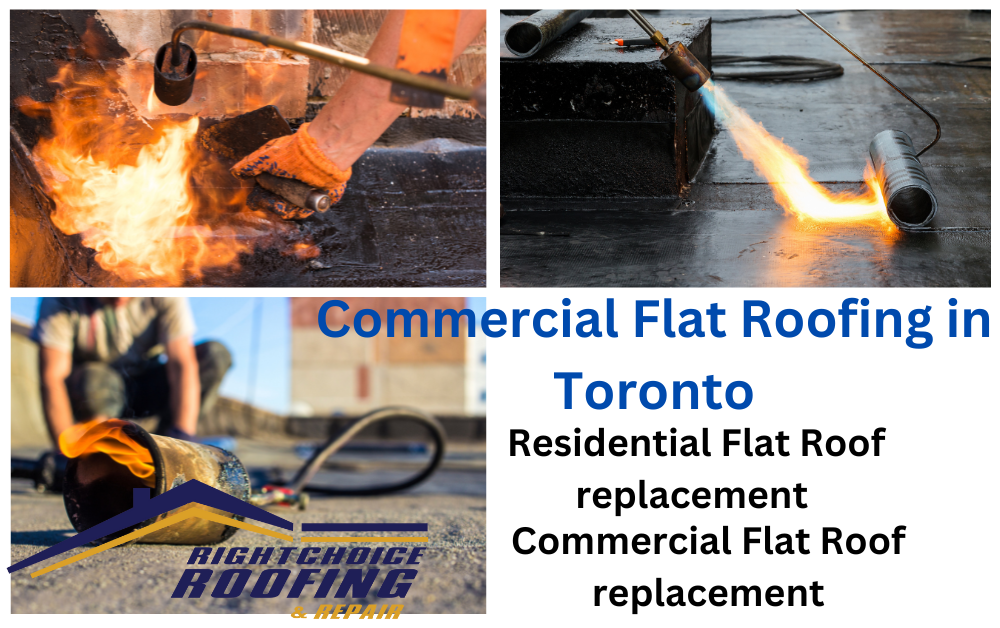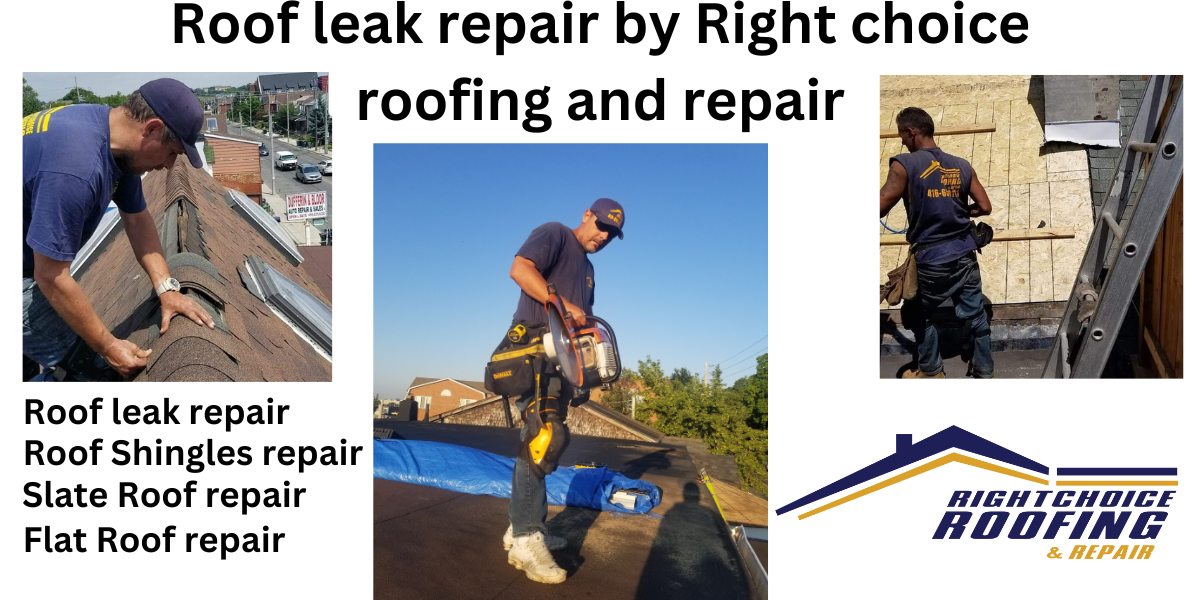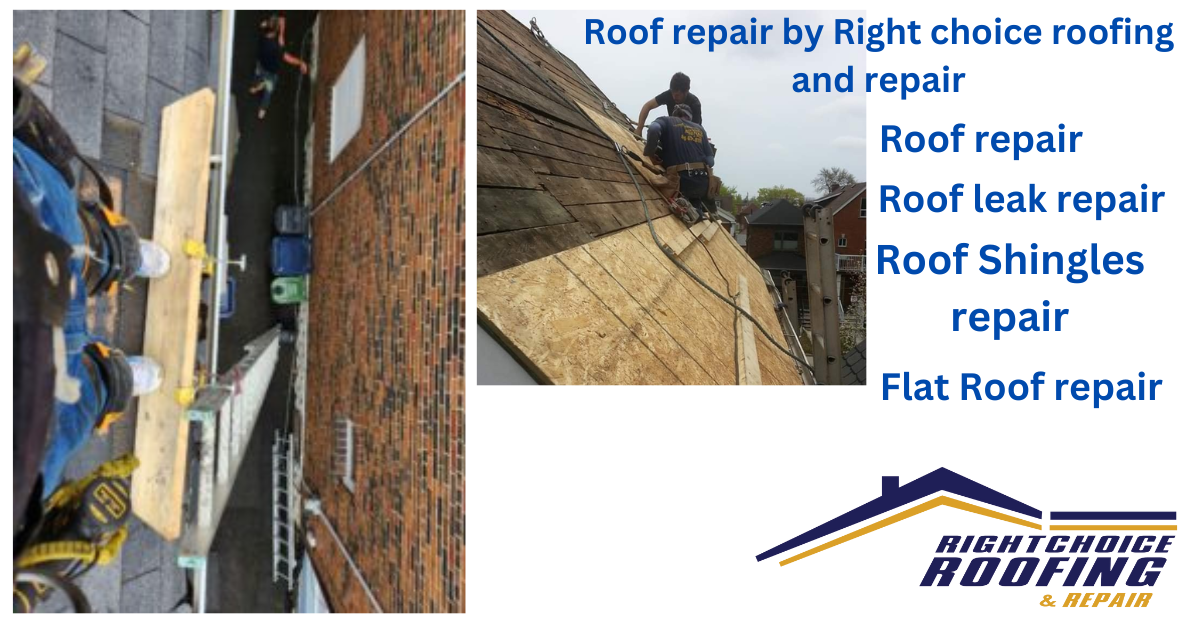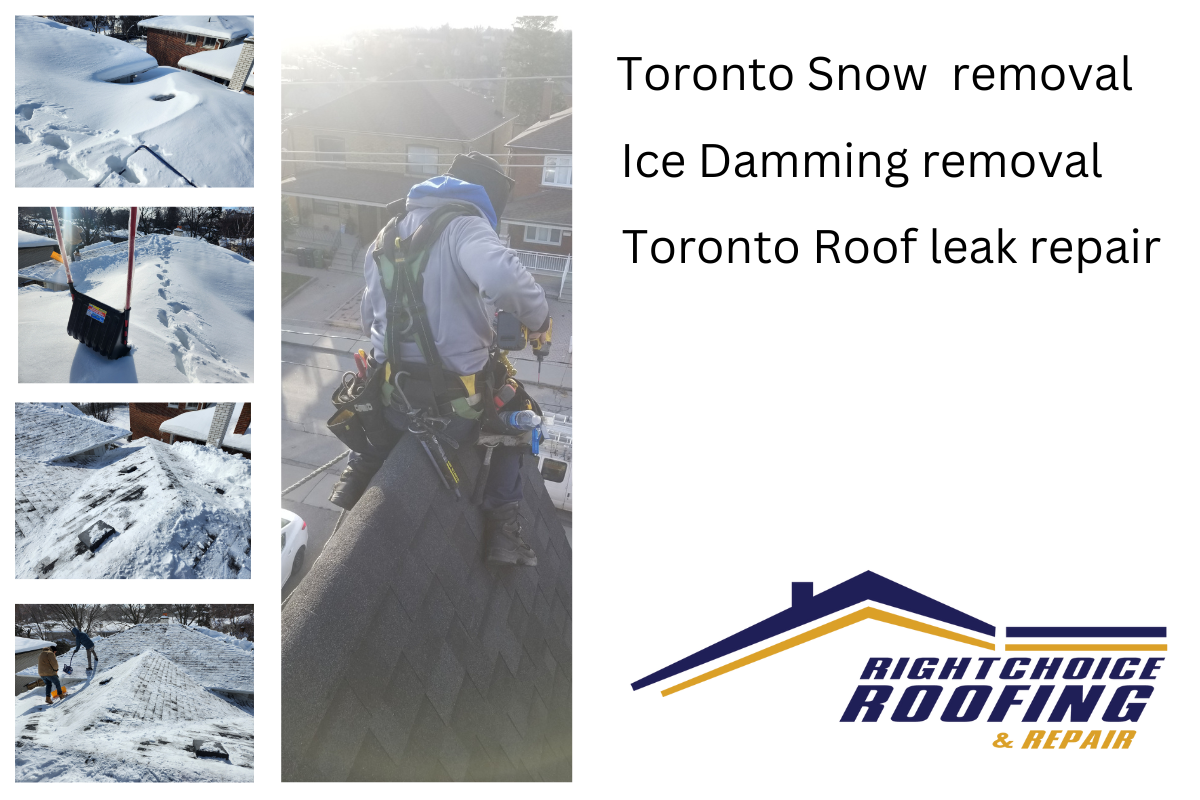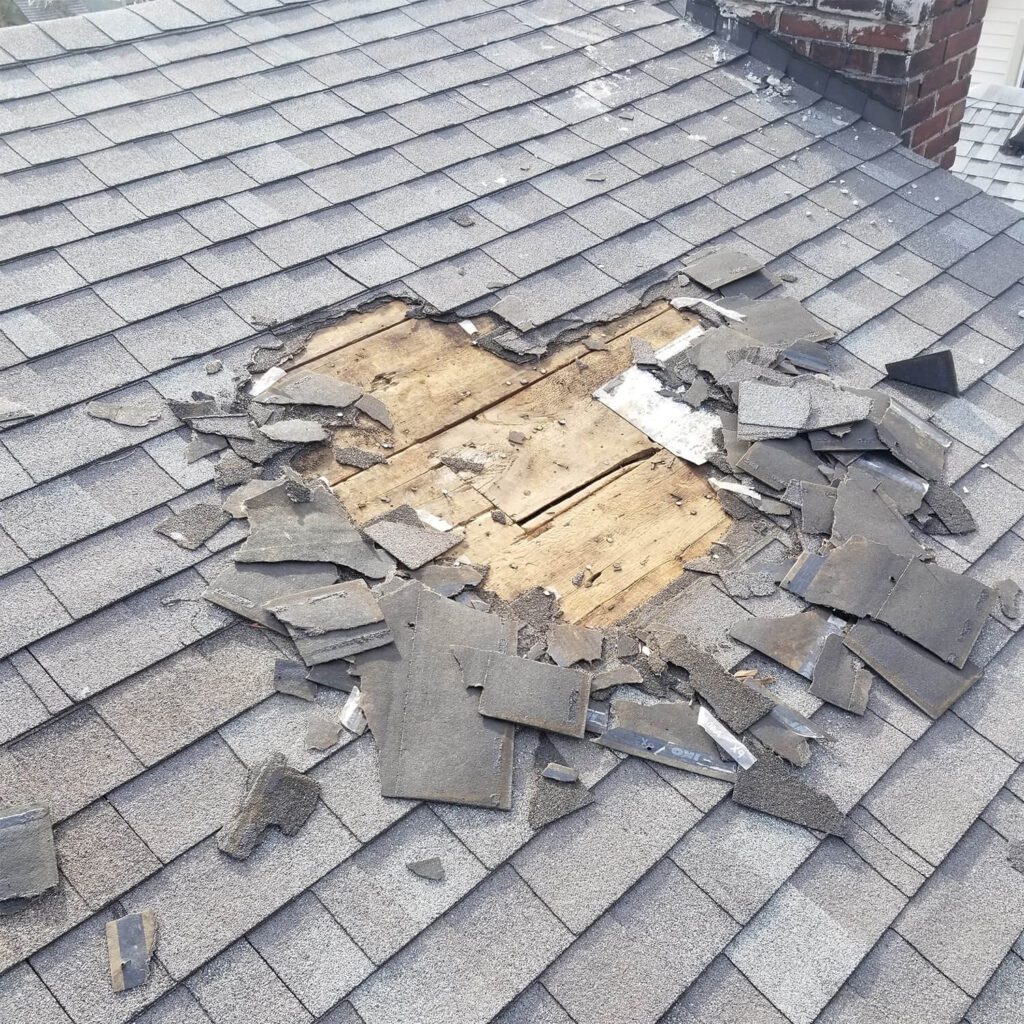
Is your roof under siege by unwanted wildlife guests? 🦝🐿️ You’re not alone. Countless homeowners face the frustrating challenge of wildlife damage to their roofs, leading to costly repairs and potential safety hazards. From raccoons tearing through shingles to squirrels gnawing on wooden structures, these critters can wreak havoc on your home’s first line of defense against the elements.
But don’t despair! There’s hope for those battling with persistent wildlife invaders. In this comprehensive guide, we’ll explore effective strategies to protect your roof from animal damage, humanely remove unwanted guests, and repair existing damage. We’ll also delve into eco-friendly roofing solutions that can help you coexist peacefully with local wildlife while maintaining a sturdy and secure roof over your head.
Ready to take back control of your roof and safeguard your home? Let’s dive into understanding wildlife damage, prevention techniques, safe removal methods, repair strategies, and sustainable roofing options that will keep both your home and local ecosystems thriving. 🏡🌿
Understanding Wildlife Damage to Roofs

Wildlife removal prime suspects
When it comes to wildlife damage on roofs, several animals are known to be frequent offenders. Understanding these culprits is crucial for effective prevention and repair. Here are some of the most common animals that can cause roof damage:
- Raccoons
- Squirrels
- Bats
- Birds (especially woodpeckers)
- Rats and mice
| Animal | Common Damage |
|---|---|
| Raccoons | Tear shingles, create large holes |
| Squirrels | Gnaw on wood, chew through soffits |
| Bats | Create small entry points, leave droppings |
| Birds | Peck holes, build nests in gutters |
| Rats/Mice | Chew wiring, create small entry points |
Raccoons and squirrels are particularly problematic in urban areas like Toronto, where they’ve adapted well to human environments. These animals are strong and dexterous, capable of tearing through roofing materials to gain access to attics for shelter.
Signs of Wildlife infestation roof damage
Identifying the signs of wildlife damage early can save homeowners from costly repairs down the line. Here are key indicators to watch for:
- Visible holes or tears in roofing materials
- Scratching or scurrying sounds in the attic
- Droppings or urine stains on ceilings or in the attic
- Damaged or displaced shingles
- Chewed wood around eaves or soffits
- Nests in gutters or on the roof
- Unexplained increases in energy bills
It’s important to conduct regular roof inspections, especially after severe weather events, as these can create vulnerabilities that wildlife may exploit. If you notice any of these signs, it’s crucial to contact a professional Toronto roofing service or wildlife removal expert promptly.
Long-term consequences of neglecting Wildlife roof repairs
Ignoring wildlife damage to your roof can lead to severe and costly problems over time. Some of the long-term consequences include:
- Structural damage: Continued animal activity can weaken roof structures, potentially leading to partial collapses.
- Water damage: Holes and gaps created by animals allow water to enter, causing rot, mold, and damage to insulation and interior spaces.
- Increased energy costs: Damaged roofing and insulation can significantly reduce your home’s energy efficiency.
- Health risks: Animal droppings and urine can pose serious health hazards, especially if they contaminate living spaces.
- Electrical hazards: Some animals, like rodents, may chew on electrical wiring, creating fire risks.
Addressing wildlife damage promptly is not just about maintaining your roof; it’s about protecting your entire home and the health of its occupants. Regular maintenance and swift action when damage is detected can prevent these long-term issues and extend the life of your roof.
Now that we’ve covered the basics of understanding wildlife damage to roofs, let’s explore some effective preventive measures to protect your roof from these unwanted visitors.
Preventive Measures for Wildlife Roof Protection
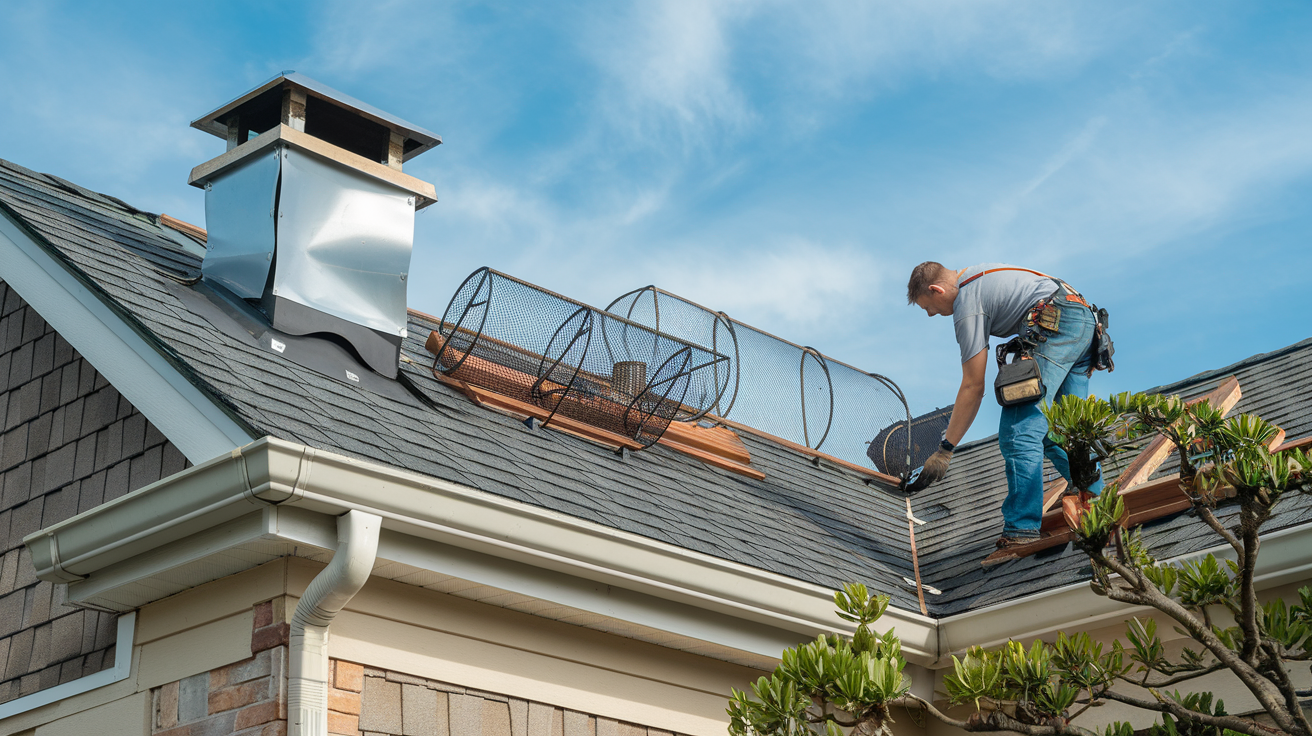
Roof tune ups and reinforcements
One of the most effective ways to protect your roof from wildlife damage is by sealing potential entry points. Animals like raccoons and squirrels are opportunistic and will exploit any weakness in your roof’s structure. Here’s a list of common entry points to focus on:
- Gaps in roof vents
- Loose or damaged shingles
- Openings around chimneys
- Holes in soffits and fascia
To properly seal these areas, use durable materials such as metal flashing, wire mesh, or specialized sealants. Remember, different animals require different sealing techniques. For instance, raccoons are strong and may need more robust barriers compared to smaller creatures like bats.
Installing wildlife deterrents
Once you’ve sealed entry points, the next step is to install deterrents to discourage wildlife from approaching your roof. Here are some effective options:
| Deterrent Type | Effectiveness | Target Animals |
|---|---|---|
| Motion-activated sprinklers | High | Most mammals |
| Ultrasonic devices | Moderate | Rodents, bats |
| Bright lights | High | Nocturnal animals |
| Predator decoys | Moderate | Birds, small mammals |
Remember to rotate or move these deterrents periodically to prevent animals from becoming accustomed to them.
Trimming nearby trees and vegetation
Overhanging branches and dense vegetation near your roof can serve as highways for wildlife to access your home. By trimming trees and bushes, you create a buffer zone that makes it harder for animals to reach your roof. Here are some guidelines:
- Trim branches at least 10 feet away from your roof
- Remove dead or weak branches that could fall and damage your roof
- Clear away vines growing on exterior walls
- Keep your yard clean of fallen fruit or nuts that might attract wildlife
Regular roof inspections
Consistent monitoring is key to preventing wildlife damage. Regular inspections allow you to catch potential issues early before they become major problems. Here’s a checklist for your roof inspections:
- Check for loose or missing shingles
- Inspect flashing around chimneys and vents
- Look for signs of animal activity (droppings, nests, chew marks)
- Examine gutters for blockages or damage
- Assess the condition of soffits and fascia
Consider scheduling professional inspections at least twice a year, ideally in spring and fall. A Toronto roofing contractor or GTA roofer can provide expert assessment and identify vulnerabilities that may not be apparent to the untrained eye.
By implementing these preventive measures, you’ll significantly reduce the risk of wildlife damage to your roof. Remember, it’s always easier and more cost-effective to prevent damage than to repair it. If you do encounter persistent wildlife issues, don’t hesitate to contact professional wildlife removal services in Toronto for safe and humane solutions.
Safe and Humane Wildlife Removal Techniques
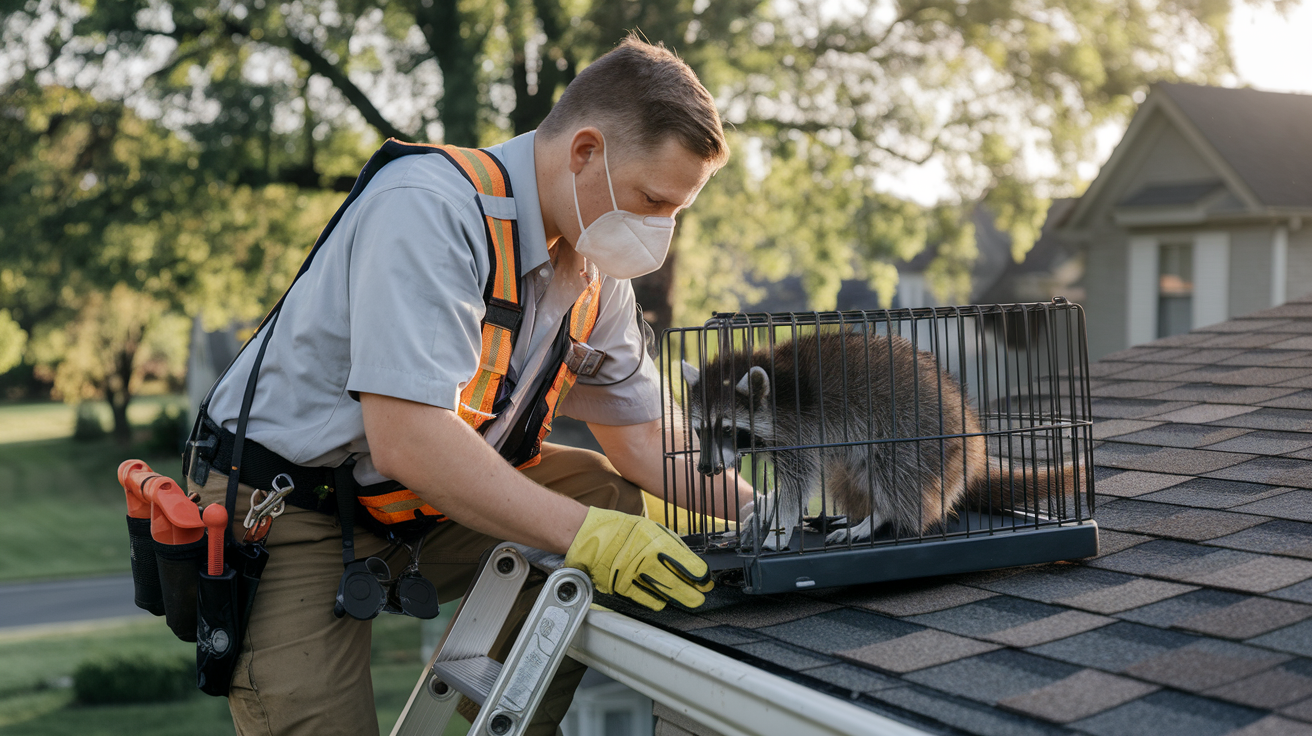
Identifying Wildlife infestation
Before attempting any wildlife removal, it’s crucial to identify the species causing damage to your roof. Different animals require specific removal techniques to ensure their safety and prevent further damage. Here’s a quick guide to help you identify common roof-damaging wildlife:
| Species | Signs of Presence |
|---|---|
| Raccoons | Large droppings, distinctive paw prints, torn shingles |
| Squirrels | Chewed wood, small droppings, scratching noises |
| Bats | Small droppings, musky odor, squeaking sounds |
| Birds | Nests, feathers, chirping noises |
Slate Roofing Wildlife Roof repair
Professional wildlife removal services
For safe and effective wildlife removal, it’s often best to hire professional services. Toronto Roofing companies and specialized wildlife removal services in Toronto offer expertise in humane animal relocation. These professionals:
- Use species-specific removal techniques
- Ensure compliance with local wildlife regulations
- Provide follow-up services to prevent future infestations
- Offer roof repair services to address any damage
When selecting a service, look for licensed and experienced professionals who prioritize humane removal methods.
DIY humane trapping methods
If you decide to handle the situation yourself, consider these humane trapping methods:
- Live traps: Use species-appropriate sizes and bait
- One-way exclusion devices: Allow animals to exit but not re-enter
- Repellents: Use natural or commercial deterrents to encourage relocation
Remember, the goal is to remove the animal safely without causing harm. Always check traps frequently and release captured animals in appropriate habitats away from your property.
Legal considerations for wildlife handling
Wildlife removal must comply with local and federal regulations. In Toronto and the GTA, there are specific guidelines for handling urban wildlife:
- Certain species are protected and require special permits for removal
- There are restrictions on relocating animals beyond certain distances
- Some methods of removal or deterrence may be prohibited
Before attempting any wildlife removal, consult with local authorities or a Toronto Roofing contractor familiar with wildlife regulations. This ensures you stay within legal boundaries while protecting your roof.
As we move forward, it’s important to address the damage caused by wildlife to your roof. Professional roofers in Toronto can assess the extent of the damage and provide appropriate repair solutions, ensuring your roof remains structurally sound and protected against future wildlife intrusions.
Repairing Flat Roof Wildlife Damage

Assessing the extent of wildlife roof damage
Before embarking on any repair work, it’s crucial to thoroughly assess the damage caused by wildlife to your roof. This step will help you determine the appropriate repair strategy and materials needed. Here’s a checklist to guide you through the assessment process:
- Inspect the roof surface for visible signs of damage
- Check for missing or damaged shingles
- Look for holes or gaps in the roofing material
- Examine the attic for signs of water damage or light penetration
- Assess the structural integrity of the roof
| Damage Type | Possible Cause | Severity Level |
|---|---|---|
| Missing shingles | Raccoons or squirrels | Moderate |
| Small holes | Birds or rodents | Low to Moderate |
| Large holes | Raccoons or larger animals | High |
| Torn underlayment | Various wildlife | Moderate to High |
| Damaged fascia/soffit | Raccoons or squirrels | Moderate |
Choosing appropriate roof repair materials
Once you’ve assessed the damage, selecting the right materials for your roof repair is essential. Consider the following factors:
- Roofing material type (e.g., asphalt shingles, metal, slate)
- Extent of damage
- Weather conditions in your area
- Budget constraints
For most wildlife-related roof damage in Toronto, you’ll likely need:
- Replacement shingles (matching your existing roof)
- Roofing underlayment
- Flashing materials
- Sealants and adhesives
- Fasteners (nails or screws)
Step-by-step wildlife roof damage repair process
Now that you’ve assessed the damage and gathered the necessary materials, follow these steps to repair your roof:
- Clean the damaged area thoroughly
- Remove any damaged shingles or roofing material
- Inspect and repair the underlying structure if necessary
- Apply new underlayment if required
- Install new shingles or roofing material
- Seal any gaps or seams to prevent future wildlife intrusion
- Check for proper water drainage and make adjustments if needed
When to call a professional wildlife roofer
While some minor repairs can be DIY projects, there are situations where it’s best to call a professional Toronto roofing contractor. Consider contacting a professional if:
- The damage is extensive or affects a large area of your roof
- You’re unsure about the structural integrity of your roof
- The repair requires specialized tools or expertise
- You’re not comfortable working at heights or have safety concerns
- The damage is recurring, indicating a persistent wildlife problem
A professional Toronto roofer can provide a comprehensive assessment, recommend the best repair solutions, and ensure that the work is done safely and effectively. They can also advise on wildlife prevention measures to protect your roof from future damage.
Remember, addressing wildlife damage promptly is crucial to prevent further deterioration of your roof and potential water damage to your home’s interior. Whether you choose to tackle the repairs yourself or hire a professional, taking action quickly will help maintain the integrity of your roof and protect your home from the elements.
Eco-friendly wildlife Roofing Solutions

Wildlife-resistant roofing materials
When considering eco-friendly roofing solutions that also deter wildlife, it’s essential to choose materials that are both sustainable and effective. Here are some wildlife-resistant roofing materials that can help protect your home while minimizing environmental impact:
- Recycled Metal Roofing
- Synthetic Slate Tiles
- Reinforced Rubber Roofing
- Composite Shingles
| Material | Wildlife Resistance | Eco-Friendliness | Durability |
|---|---|---|---|
| Recycled Metal | High | Very High | Excellent |
| Synthetic Slate | Medium-High | High | Very Good |
| Reinforced Rubber | High | Medium-High | Good |
| Composite Shingles | Medium | Medium-High | Good |
Recycled metal roofing offers excellent wildlife resistance due to its smooth surface and durability. It’s also highly eco-friendly, as it’s made from recycled materials and is fully recyclable at the end of its lifespan.
Synthetic slate tiles mimic the appearance of natural slate while providing better resistance to wildlife damage. They’re often made from recycled materials and are more lightweight than traditional slate, reducing the overall environmental impact of transportation and installation.
Green roof options for wildlife harmony
Green roofs provide an innovative solution that not only deters unwanted wildlife but also creates a harmonious environment for beneficial species. Consider these green roof options:
- Extensive Green Roofs: These lightweight systems support low-growing, drought-resistant vegetation like sedums and mosses.
- Intensive Green Roofs: Deeper soil layers allow for a wider variety of plants, including small trees and shrubs.
- Semi-Intensive Green Roofs: A middle ground between extensive and intensive systems, supporting a diverse range of plants without excessive weight.
Green roofs offer numerous benefits:
- Natural insulation, reducing energy costs
- Improved air quality
- Stormwater management
- Habitat creation for beneficial insects and birds
- Extended roof lifespan
When implementing a green roof, it’s crucial to ensure proper waterproofing and structural support. Consult with a professional Toronto roofing contractor to determine the best green roof solution for your home.
Sustainable wildlife roof repair practices
Adopting sustainable repair practices not only helps protect the environment but can also lead to long-term cost savings. Here are some eco-friendly approaches to roof repair:
- Use recycled or upcycled materials whenever possible
- Opt for locally sourced materials to reduce transportation emissions
- Choose energy-efficient roofing systems to improve your home’s overall sustainability
- Implement proper insulation techniques to minimize heat loss and reduce energy consumption
When addressing wildlife damage, focus on targeted repairs rather than full roof replacements when feasible. This approach reduces waste and conserves resources. Additionally, consider these sustainable repair techniques:
- Infrared moisture detection to pinpoint problematic areas without unnecessary tear-offs
- Cool roof coatings to improve energy efficiency and extend roof lifespan
- Proper ventilation systems to prevent moisture buildup and reduce the need for frequent repairs
By incorporating these eco-friendly roofing solutions and sustainable repair practices, you can effectively protect your home from wildlife damage while minimizing your environmental footprint. As we move forward, it’s crucial to consider the long-term benefits of these approaches, not only for your property but for the ecosystem as a whole.
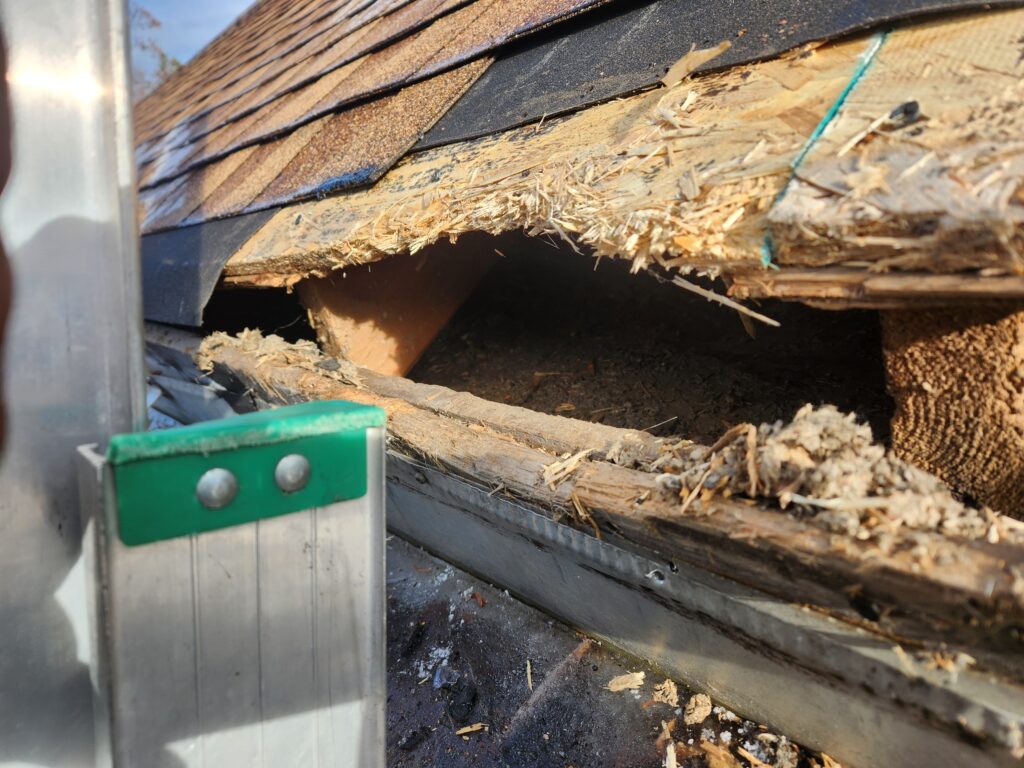
Protecting your roof from wildlife damage and addressing existing issues requires a comprehensive approach. By understanding how animals can harm your roof, implementing preventive measures, and using safe removal techniques, you can maintain the integrity of your home while respecting local wildlife. When repairs are necessary, it’s crucial to address the damage promptly and consider eco-friendly roofing solutions for long-term protection.
Remember, a well-maintained roof not only safeguards your home but also discourages wildlife from taking up residence. By staying proactive and informed about wildlife roof repair, you can create a harmonious balance between preserving your property and coexisting with nature. Take action today to ensure your roof remains a strong, wildlife-resistant barrier for years to come.
